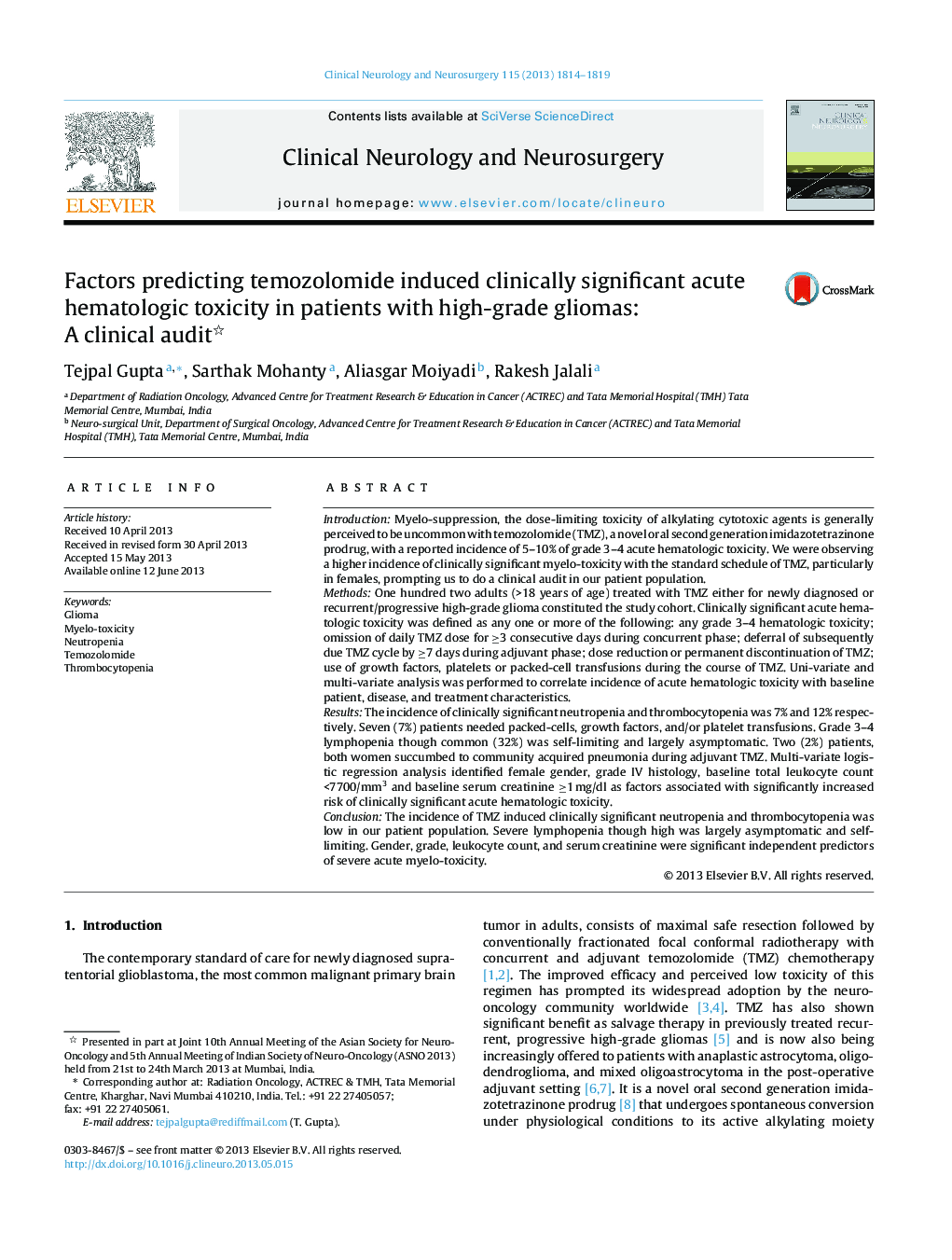| کد مقاله | کد نشریه | سال انتشار | مقاله انگلیسی | نسخه تمام متن |
|---|---|---|---|---|
| 3040506 | 1184739 | 2013 | 6 صفحه PDF | دانلود رایگان |

IntroductionMyelo-suppression, the dose-limiting toxicity of alkylating cytotoxic agents is generally perceived to be uncommon with temozolomide (TMZ), a novel oral second generation imidazotetrazinone prodrug, with a reported incidence of 5–10% of grade 3–4 acute hematologic toxicity. We were observing a higher incidence of clinically significant myelo-toxicity with the standard schedule of TMZ, particularly in females, prompting us to do a clinical audit in our patient population.MethodsOne hundred two adults (>18 years of age) treated with TMZ either for newly diagnosed or recurrent/progressive high-grade glioma constituted the study cohort. Clinically significant acute hematologic toxicity was defined as any one or more of the following: any grade 3–4 hematologic toxicity; omission of daily TMZ dose for ≥3 consecutive days during concurrent phase; deferral of subsequently due TMZ cycle by ≥7 days during adjuvant phase; dose reduction or permanent discontinuation of TMZ; use of growth factors, platelets or packed-cell transfusions during the course of TMZ. Uni-variate and multi-variate analysis was performed to correlate incidence of acute hematologic toxicity with baseline patient, disease, and treatment characteristics.ResultsThe incidence of clinically significant neutropenia and thrombocytopenia was 7% and 12% respectively. Seven (7%) patients needed packed-cells, growth factors, and/or platelet transfusions. Grade 3–4 lymphopenia though common (32%) was self-limiting and largely asymptomatic. Two (2%) patients, both women succumbed to community acquired pneumonia during adjuvant TMZ. Multi-variate logistic regression analysis identified female gender, grade IV histology, baseline total leukocyte count <7700/mm3 and baseline serum creatinine ≥1 mg/dl as factors associated with significantly increased risk of clinically significant acute hematologic toxicity.ConclusionThe incidence of TMZ induced clinically significant neutropenia and thrombocytopenia was low in our patient population. Severe lymphopenia though high was largely asymptomatic and self-limiting. Gender, grade, leukocyte count, and serum creatinine were significant independent predictors of severe acute myelo-toxicity.
Journal: Clinical Neurology and Neurosurgery - Volume 115, Issue 9, September 2013, Pages 1814–1819